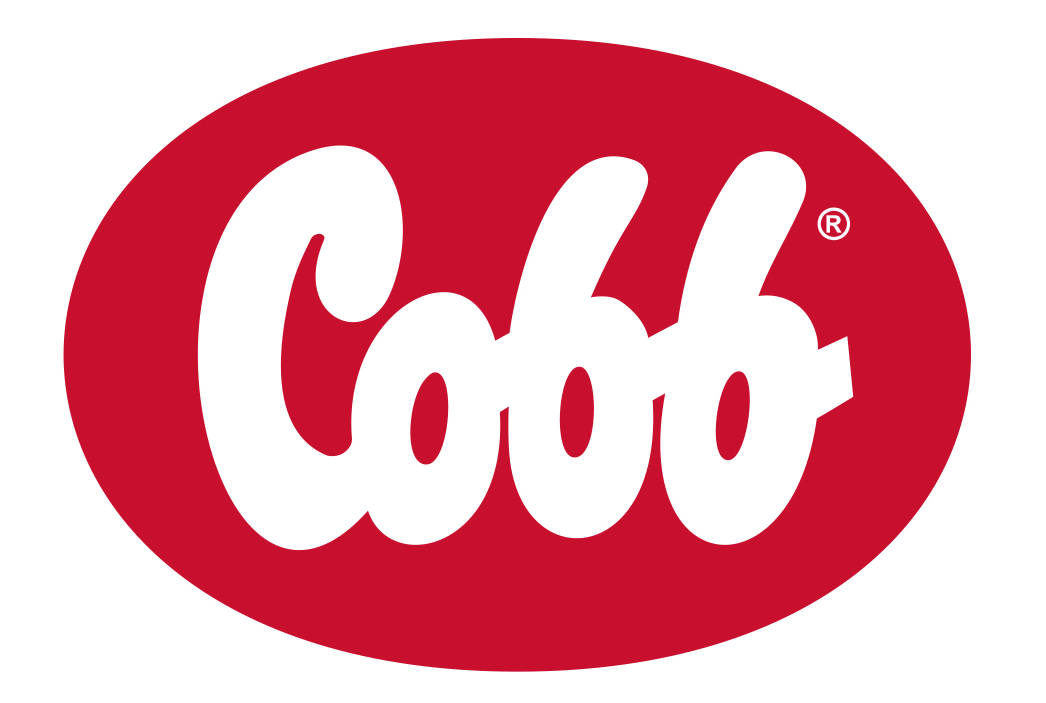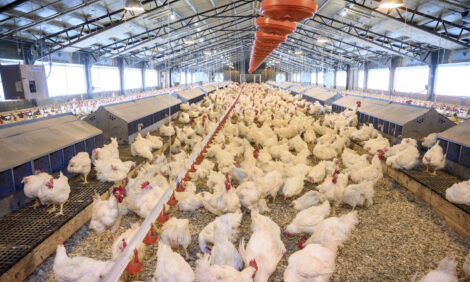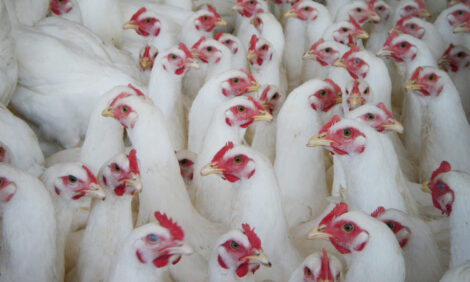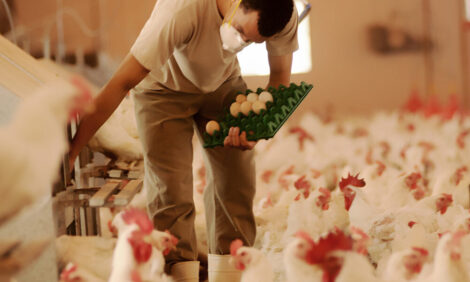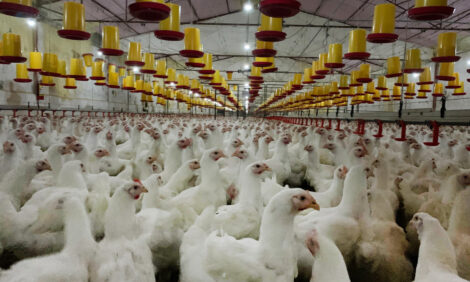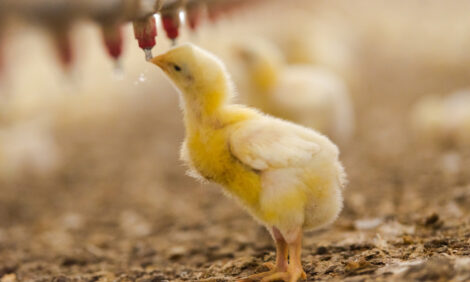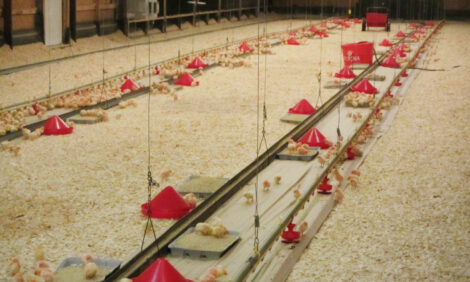



Cobb Breeder Management Guide: Biosecurity on the farm
Tips to help prevent the introduction and spread of disease at the hatchery, feed mill and farmPart of Series:
Next Article in Series >
Editor's note: This article is an excerpt from the Cobb Breeder Management Guide and additional articles will follow. The Guide was designed to highlight critical factors that are most likely to influence flock performance. The management recommendations discussed were developed specifically for Cobb products. The recommendations are intended as a reference and supplement to your own flock management skills so that you can apply your knowledge and judgement to obtain consistently good results with the Cobb family of products. To read or download the complete Guide or to view Cobb's other management guides, click here.
Biosecurity must encompass all the operations performed by the breeding stock caretaker. Procedures to prevent the introduction and spread of disease or contamination must be implemented at the hatchery, feed mill, farm operations, general maintenance and by personnel. An issue in any area will endanger the whole biosecurity program and the general wellbeing and productivity of the flock. All personnel must understand the importance of the biosecurity program. Biosecurity essentials include:
Animal and bird contact
- The farm team must not have contact with other birds, and possessing backyard birds is not allowed
- All team members must sign an agreement to avoid and not possess birds.
- Respect all required “no contact time” for any non-company bird contacts. Exposure to non-company flocks or birds must require a minimum of 72 hours of no contact before re-entering flocks, especially if disease threats are active in the area.
- No pet animals should be allowed in or around the poultry housing.
- Farm animals other than poultry should be fenced separately and accessed via a separate entrance.
Farm team hygiene
- Ideally a ‘shower in and shower out’ policy is regarded as best practice including a timed, five-minute, hot shower with the necessary cleansing and sanitizing agents which must be provided.
- Use dedicated changing facilities located at the site entrance for employees and visitors and provide protective clothing and footwear.
- Only essential items are permitted on the farm. Personal items such as jewelry, phones and watches are discouraged. All items that enter the farm must be disinfected.
- Use boot dips and sanitize hands prior to flock contact.
- Catching, vaccination and selection crews should be provided with protective clothing.
- Do not dry farm clothes in open air. Use of gas or electric dryers should be a protocol.
Visitors
- Everyone entering the premises must register and answer a questionnaire before entering. Keep a record of all approved visitors and their previous farm visits and/or bird contact.
- If delivery vehicles enter the farm, they must be washed and disinfected at the farm entrance. A wash bay with wheel dips and spraying facilities should be located at the farm entrance.
- All outside equipment should be thoroughly cleaned and disinfected before it comes onto the farm, and again upon arrival at the receiving house.
- Incoming traffic must be minimized.
- Any visitors who need to enter the farm must shower and change into a clean uniform. Since shower facilities can be a biosecurity risk, it is important that they are kept clean and sanitized, with designated “clean” and “dirty” zones.
- Catching equipment such as crates/modules and forklifts must be washed and disinfected before entry to the farm.
Disease prevention
- Dispose of mortality in the correct and hygienic manner daily.
- Water should be obtained from known clean sources and not from open water supplies.
- Have a written plan in place to address disease outbreaks.
Farm barriers
- Distance between farms is a good physical barrier.
- Each farm must have a perimeter fence with a locked gate to prevent unauthorized entry of people, vehicles and animals.
- Keep grass and other vegetation controlled to prevent moist areas and discourage pest harborage. No vegetation should be allowed directly around poultry houses.
- Use adequate signage to alert outside visitors.
- Place all utility meters and equipment (e.g. gas, water and electric) outside of the farm to prevent utility trucks and personnel from entering the farm.
- Choose an isolated site when developing new parent farm facilities away from other poultry farms, rivers and ponds to limit disease risk and exposure to wild birds.

Flock Housing
- Use assigned areas for boot changing stations before entering the houses.
- Keep all doors shut and well-sealed to prevent rodent entry.
- Disinfect all equipment and supplies prior to entering the houses.
- Use wild bird proofing equipment and materials and rodent traps and barriers.
Litter
- Ideally the manufacturer should heat treat litter for drying purposes, as well as, disinfection.
- Litter material should be kept covered at every stage from manufacturer to farm.
- Litter should be stored in a secure facility that is rodent and bird proof.
- Treat the litter with an approved disinfectant or organic acid.
- Source new material from known approved suppliers.
- Dispose of used litter in accordance with local legislation.
Feed
- Clean feed spills immediately to reduce risk of vermin (wild bird, rodent) near the farm.
- Use clean raw materials and heat / chemically treat to prevent Salmonella. Follow local legislation on type of treatment allowed.
- Manage feed bins and feed systems to keep feed and systems clean and prevent mold.
- Feed delivery best practice is a feed silo outside the farm perimeter fence. Dedicated farm vehicles should move the feed from the outside silo to each house.
Flock to flock contact
- Single-age breeder farms are highly recommended to reduce the risk of cycling of pathogens and/or vaccine agents within the farm.
- All chicks should be sourced from the same hatchery have the same vaccination status and be sourced from breeder flocks with the same health status.
- For multi-age breeder complexes, the distance between flocks of different ages should be no less than 600 m (2000 ft).
- On multi-age farms, supervisors/managers should always visit houses with the youngest source flock first. If possible, limit visits to flocks of 2 different ages.
- When visiting multiple farms in a single day, always visit the youngest flocks first.
- When visiting a farm with a suspect/known disease, visits to other farms must be delayed.
- Enforce a minimum requirement (ex: 72 hours) of “no poultry contact” before visitors can enter the farm if they come from non-challenged areas. If visitors are from areas with disease issues the down time period should be extended to 7 days.
- Depletion of birds should be complete before arrival of new chicks.
- Use dedicated weighing scales, catch screens and other equipment that is used frequently for each age group farm unit and do not move or share this equipment between different ages.
Team member training
- Establish standard operating procedures and monitor their effectiveness.
- Provide regular training sessions for all team members.
- Programs must be practical and supported from the top of the organization.







